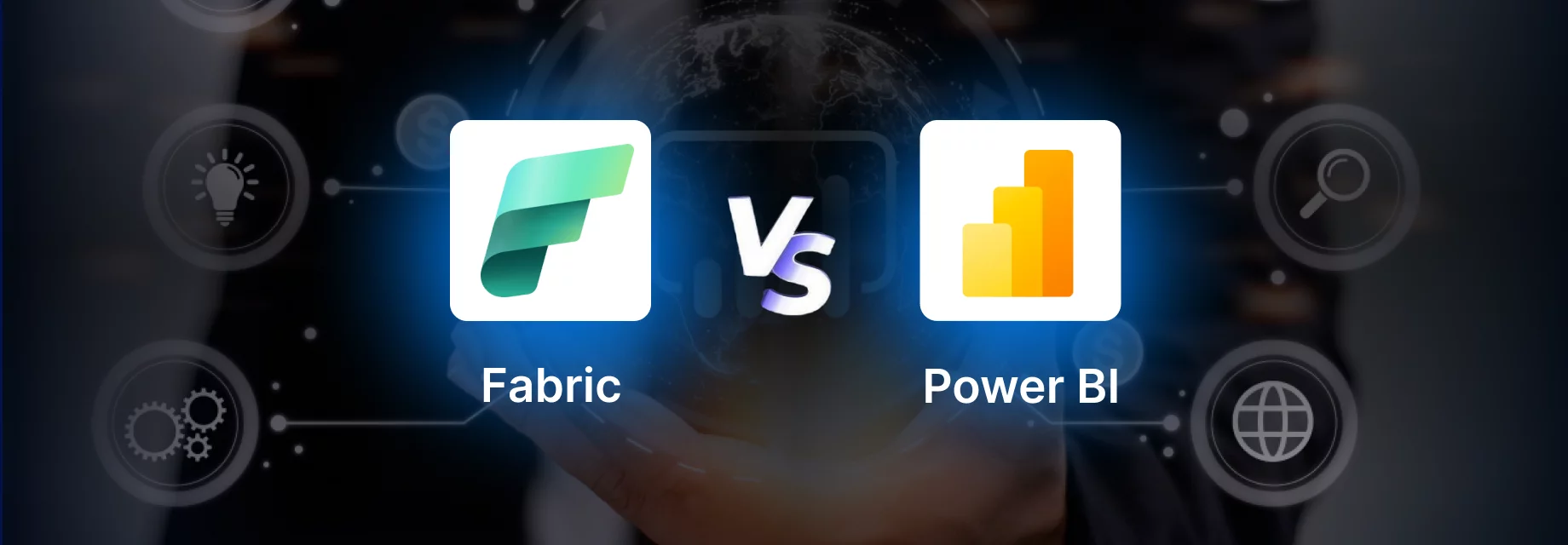Digital transformation, whether for a small business or a large corporation, has enabled companies to generate data at every interaction. Regardless of the organization’s size, every business requires a database to organize and securely store its critical information. To meet this need, database management system software becomes an essential tool. A web app database can be compared to a dedicated room within an office where all crucial records and information are securely stored and easily accessed when needed. Given the sensitive nature of the stored data, it is important to exercise extreme caution when accessing it. This stored information can later be retrieved and analyzed using data visualization techniques to gain valuable insights.
What are the Top Web App Database in 2025?
Choosing the best web app database for web applications is essential to ensure optimal performance and scalability. For instance, if you are developing an Azure web app database, you should focus on databases that seamlessly integrate with Microsoft Azure’s ecosystem for enhanced scalability and management. Here’s an overview of the top database for 2025.
1. Oracle
Oracle is the most widely used commercial relational database management system, built-in assembly languages such as C, C++, and Java. The latest version of this database, 21c, introduces numerous new features. Oracle stands out as the leading database management system and is the most widely used RDBMS. It is space-efficient, processes data more quickly, and comes with several useful enhancements, including JSON support directly from SQL.
2. MySQL
MySQL emphasizes stability, robustness, and maturity, making it a preferred choice for web application development solutions. Developed using C and C++, MySQL relies on structured query language (SQL) for managing data. The latest version, MySQL 8.0, offers enhanced recovery options. This leading SQL database is available in various editions, each tailored with unique features to cater to diverse requirements.
3. MS SQL Server
Microsoft offers excellent toolset support for this top-tier database software, available for both on-premises and cloud environments. It is highly compatible with both Linux and Windows operating systems. MS SQL Server is a versatile multi-model database, capable of handling Structured Data (SQL), Semi-Structured Data (JSON), and Spatial Data. While it may not be as cutting-edge as some of the newer databases on the market, it has seen significant improvements and updates over the years, enhancing its reliability and functionality.
4. MongoDB
When considering top NoSQL databases for 2025, MongoDB is a key contender. It was the first Document Database management software introduced in 2009. One of the main difficulties with traditional databases is loading and accessing data using object-oriented programming languages, which often necessitate additional application-level mapping. MongoDB was developed to solve this issue by effectively managing Document Data.
5. PostgreSQL
Originally named POSTGRES, this database management system was developed by Michael, who was later honored with the Turing Award for his significant contributions to PostgreSQL. Written in C, PostgreSQL is used by organizations handling large volumes of data. It is widely utilized by gaming apps, database automation tools, and domain registration services.
6. IBM DB2
IBM also offered DB2 LUW for Windows, Linux, and Unix. DB2 11.5 is the most recent release, and it speeds up query execution. The list of databases for mobile apps supports the relational model, but it has grown significantly in recent years. It now supports object-relational features and non- relational forms such as JSON and XML.
7. Cassandra
Cassandra is an open-core, distributed wide-column store database, developed in 2008, known for its high scalability. It is widely used across industries to manage large volumes of data. A key feature of Cassandra is its decentralized, leaderless architecture, which includes automatic replication and multi-data center replication, ensuring fault tolerance without failures. Cassandra operates with various infrastructures and processes. It shares a long history with HBase, and while both serve different use cases, they are tailored to specific needs based on their respective types.
8. Redis
Redis is a widely used open-source database project. According to Stack Overflow’s Annual Developer Survey, it is ranked as the Most Loved Database platform. As a distributed, in-memory key-value store, Redis can serve multiple purposes. It is commonly used as a distributed cache and message broker, with optional durability features to ensure data persistence.
9. Elasticsearch
Elasticsearch is an open-core, full-text search engine built on Lucene, initially released in 2010 by Shay Banon. It offers a distributed, multi-tenant architecture and is equipped with a REST API for easy interaction. Elasticsearch enables horizontal scaling through automatic sharding and supports both structured and schema-less data (JSON), making it particularly well-suited for analyzing log and monitoring data.
10. MariaDB
MariaDB is a Relational Database Management System (RDBMS) that is fully compatible with MySQL protocol and clients, allowing easy replacement of the MySQL server with MariaDB without any code changes. This database management system offers columnar storage and a massively parallel distributed data architecture. Compared to MySQL, MariaDB is more community-driven, prioritizing open-source development and contributions.
11. SQLite
SQLite is an open-source relational database management system (RDBMS) that was created in 2000. It is a top choice for databases as it requires no configuration, server, or installation. Despite its simplicity, SQLite includes many core features commonly found in traditional database management systems. It is widely used in mobile web development, including platforms like React Native, for its ease of integration and lightweight nature.
12. OrientDB
OrientDB is an open-source, NoSQL multi-model database that allows businesses to take advantage of graph database capabilities without the need to create multiple systems to handle various data types. It supports graphs, documents, key-value, and object-oriented database models, offering enhanced performance, security, and scalability. This comprehensive management solution simplifies data handling while improving system efficiency.
13. Dynamo DB
DynamoDB is a non-relational database provided by Amazon. It is a serverless solution for mobile apps that automatically scales up and down while backing up your data. The database also includes built-in security, in-memory caching, and consistent latency.
14. Firebird
Firebird is a free SQL relational database management system that runs on Mac OS X, Linux, Microsoft Windows, and various Unix platforms. This top free database for web applications has enhanced the multi-platform RDBMS. It also provides a range of funding options, including Firebird memberships and sponsorship commitments.
15. Neo4j
Neo4j is an open-source, Java-based NoSQL graph database introduced in 2007. It employs Cypher, a query language regarded as highly efficient and expressive for handling relationship queries. Unlike traditional databases, Neo4j stores data as graphs instead of tables. Its fast relationship system enables the creation of additional relationships over time, allowing for quicker access and manipulation of domain data as required.
Conclusion
Choosing a web app database for web applications involves both technical and strategic considerations. These databases offer creativity, scalability, and efficiency, catering to a wide range of web application needs, from IoT to e-commerce. The right database can accelerate business success as companies adopt cloud-native technologies, flexible data models, and real-time analytics.
If you need guidance on choosing the right SQL database or require assistance with app development, feel free to reach out. As one of the leading web development company, intelegain specializes in creating scalable applications that deliver remarkable results on both desktop and mobile platforms.
FAQs
How does Azure SQL Database ensure high availability?
It uses automatic failover, zone-redundant deployments, geo-replication, and automated backups with point-in-time restore.
How does database caching improve web app performance?
Caching temporarily stores frequently accessed data in memory, reducing the load on the database and improving response times. Tools like Redis and Memcached are commonly used for caching.
Can I integrate Azure SQL Database with Power BI for analytics?
Yes, Azure SQL Database integrates seamlessly with Power BI, allowing you to easily visualize, analyze, and share data from your database. Power BI can connect to Azure SQL Database using DirectQuery or import data for analysis.












